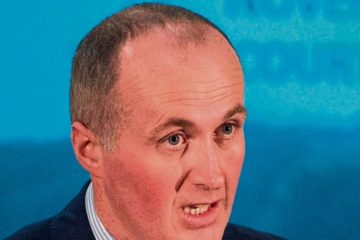We have spent billions trying to control and eliminate TB, but experts are quietly confident that eradication is back on the cards by 2030. In late 1965, then Agriculture Minister Charlie Haughey held a big party up in Government buildings to celebrate the end of a disease that had been the scourge of the country – bovine TB.
Laughable as it may appear nearly half a century later when the country still spends over €50m annually on trying to eradicate the disease, the late Mr Haughey hadn’t completely lost his marbles when he believed that a TB-free Ireland was within touching distance.
Prior to the 1960s, TB had been one of the primary diseases responsible not just for tens of thousands of animals to be culled annually, it was also one of the biggest killers of humans.
Indeed, the disease is still responsible for over 4,000 deaths every day around the world. But in the late 1800s it was one of the biggest health issues in Irish 15-25 year olds, killing 11,500 people a year here.
Remarkably, this level of infection was even higher than in crowded developing world cities such as Kolkata (Calcutta).
In the early 1900s, scientists concluded that milk was the biggest transmitter, but it wasn’t until the 1950s that TB testing became compulsory.
From a point in 1960 when a massive 160,000 TB reactors were recorded, the number of cases fell dramatically, to the point in 1965 when there were less than 30,000 reactors in the herd. Hence Mr Haughey’s expectation that TB would be eradicated by 1969. And while reactors did fall as low as 21,000 in 1968, a dramatic rise followed, and the recriminations started.
A special task force with 50 fulltime vets was convened by the Government to figure out where the strategy was going wrong. No clear new policy emerged, and the reactors kept coming.
The ESRI was brought in to do an ‘objective’ study in the 1980s, which concluded that farmers should be making a greater financial contribution to the scheme to engender a greater sense of “ownership” and get the scheme through the final hard yards of eradication.
In the meantime, reactor numbers increased by 50pc and costs escalated.
But those tasked with trying to progress the issue were gradually coming to the unpalatable conclusion that badgers were one of the “main constraints” to solving the problem.
This was confirmed in subsequent experiments such as the East Offaly and Four Area projects that saw the targeted removal of badgers in TB hotspots lowering the incidence of TB by 37-72pc.
These focused culls that removed 30pc of the local badger population that were responsible for 70pc of reactors has been replicated on a localised level around the country where TB issues are identified.
It has reduced the incidence of TB down to record low levels of just over 15,000 reactors in 2015, which is about 0.24pc of the national herd. This is 66pc lower than in 1999.
While department staff are understandably reticent about offering any hostages to fortune, they now believe that Ireland could be effectively TB free by 2030.
Vaccine set to mothball century-old test
The annual TB test that farmers dread is largely unchanged since it was developed in the early 1900s. Despite a perception among farmers that it is a ‘lottery’, the Department of Agriculture’s top experts on the disease are adamant that there is no better way of assessing animals for the disease.
While a blood test was developed in the 1980s, and an ELISA test to detect antibodies followed, along with more recent work on a phage RPA test to detect mycobacteria in blood, the century-old innoculation test is still the one that department scientists believe is most appropriate.
However, the focus now is very much on developing a vaccine to administer to badgers that would eliminate the unsustainable culling of over 6,000 members of this protected species every year.
The first results of a vaccine trial in Longford where the method has been on test across a third of the county for the last four years shows that it was able to maintain TB rates at levels similar to areas that were subjected to a targeted cull.
Additional research is being carried out in Galway, north Cork, Monaghan, Tipperary and Waterford in a huge trial that covers 5pc of Ireland’s farmland.
“Culling isn’t sustainable because if we keep going the badger population would definitely become extinct in parts of Ireland. So we can’t be doing this in 10 years time, but hopefully we won’t have to,” said the department’s head of wildlife, James O’Keeffe.


